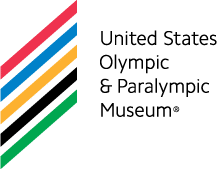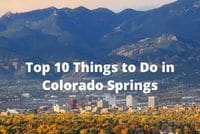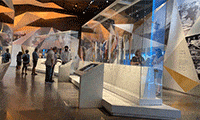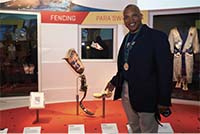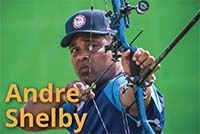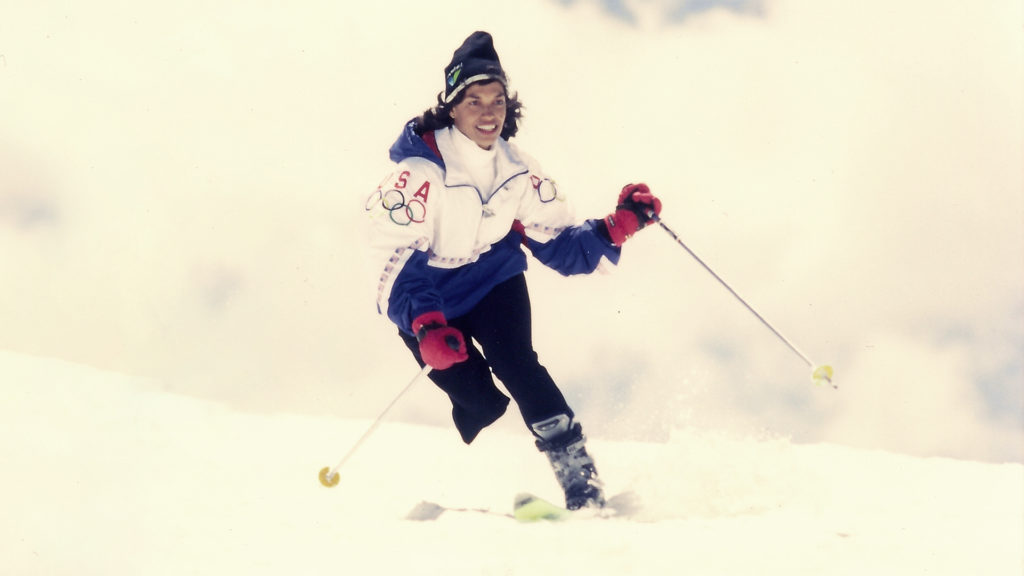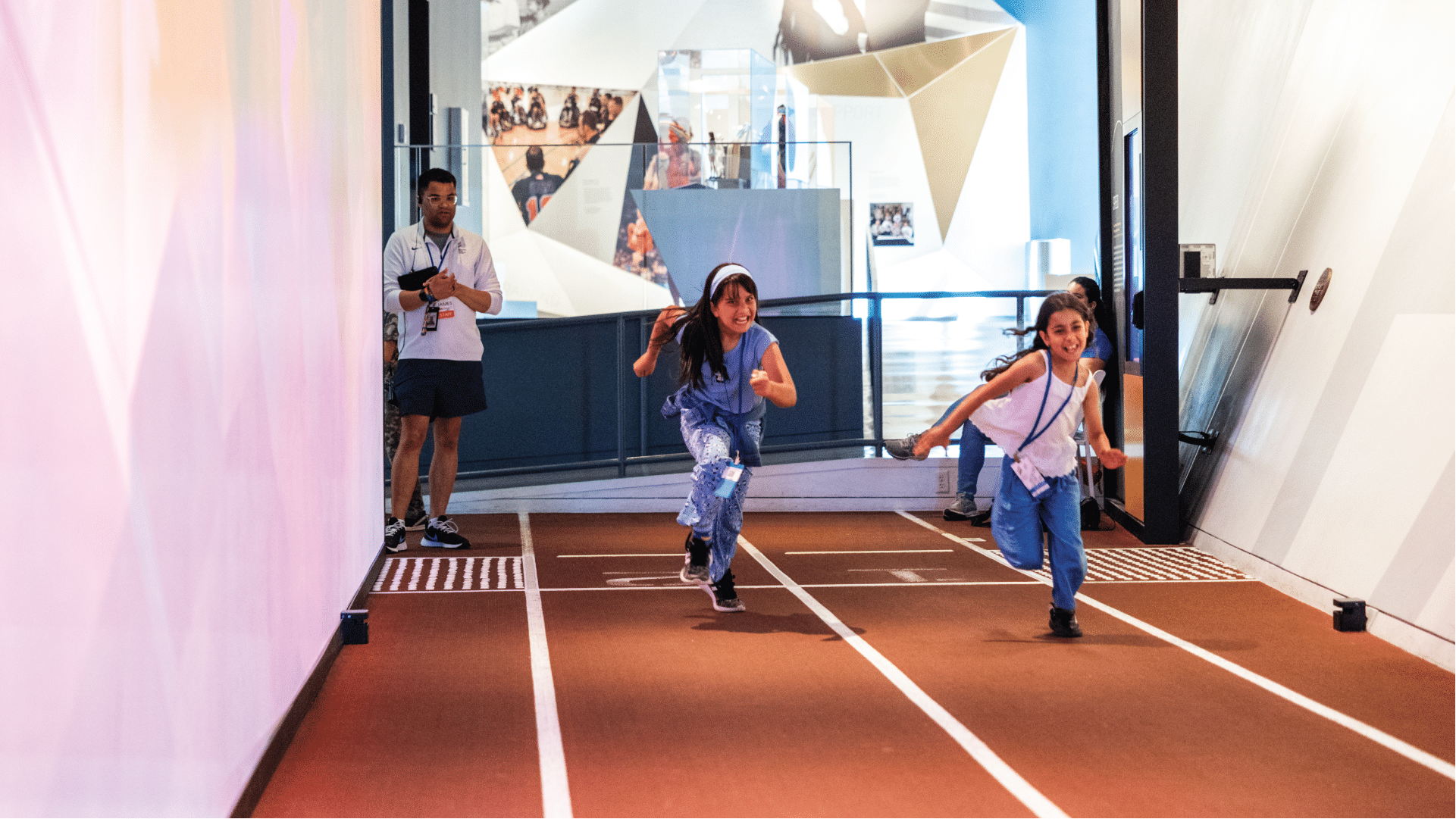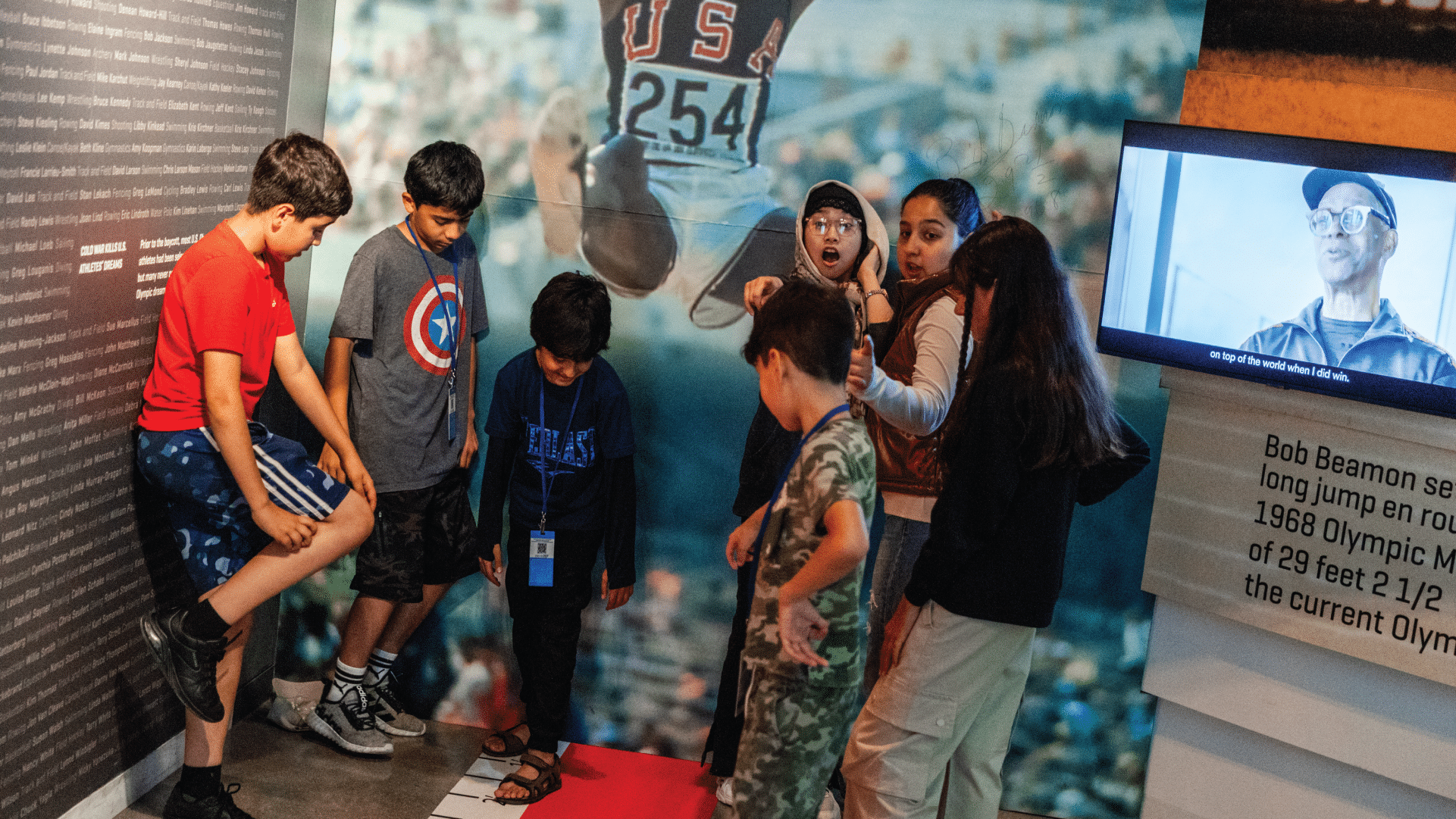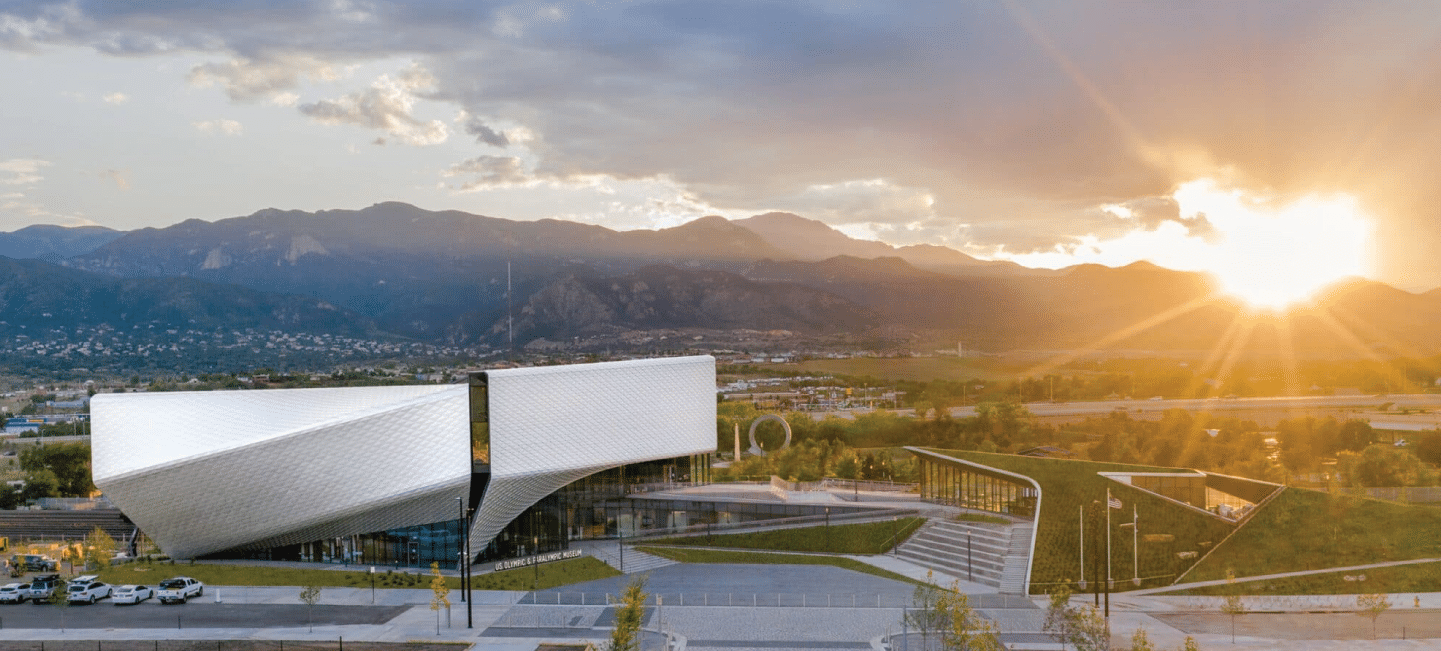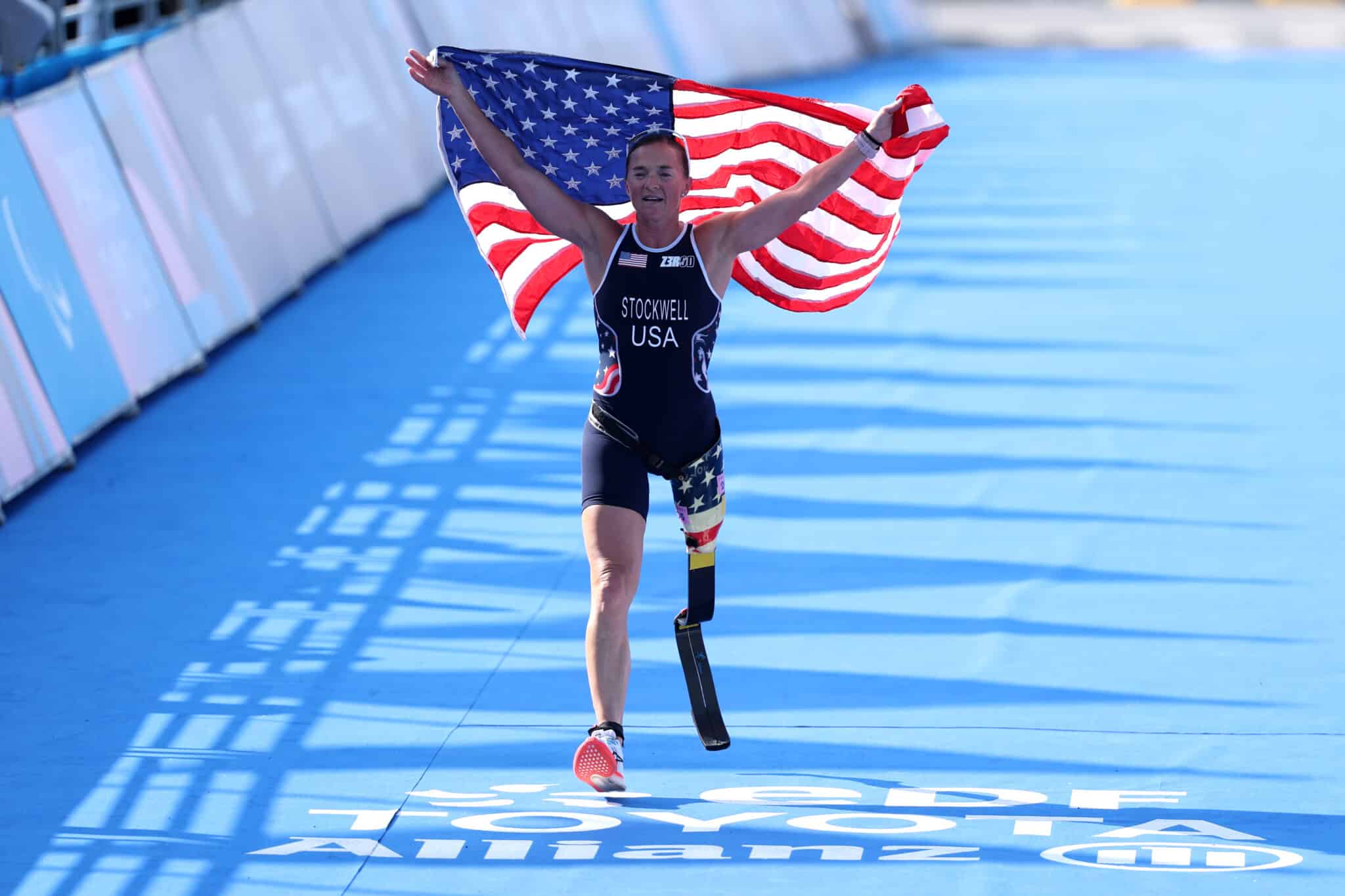An invitation from a high school friend to go skiing led St. John to an incredible athletic career, and she was just as impressive off the slopes
Bonnie St. John’s application to Harvard University was intriguing. While Harvard was – and still is – one of the nation’s most selective colleges or universities, St. John was an accomplished ski racer from sunny San Diego, a one-legged amputee not just surviving but thriving in an able-bodied world, a Black woman succeeding in far-from-diverse rural Vermont.
A member of the admissions office read St. John’s application essays about herself and then reached out to Ruby Cremaschi-Schwimmer to ask about the youngest of her three children.
“We just need to verify that she really exists,” the admissions officer said. “We have MIT grads that make up a gag application every year and we thought this might be one of them.”
No, this wasn’t some prank.
Even as a teenager, Bonnie St. John had an amazing story. And that was before she became of a member of the U.S. Paralympic Ski Team. Before she went to the Innsbruck 1984 Paralympic Winter Games and won two bronze medals – the first Black American to medal at the Paralympic Winter Games. Before she graduated from Harvard. Before she was a Rhodes Scholar and went to Oxford University. Before she worked in the White House as an economic official. Before she became CEO of her own business. And before she became a prolific author, writing seven books. Before she became a mother and faced the demons of having been sexually abused as a child. Before she was named one of the most inspiring women in America.
Listen: Being an amputee in the 1970s was much different than today
“It’s a crazy story, it really is,” St. John said. “I’m proud that I’ve been able to use my story to motivate other people to do the impossible, to see the best in themselves no matter what and to really find their greatness, however that is, however unusual that might be.”
Perhaps Bonnie’s older brother, Wayne, said it best. Wayne had seen Bonnie’s right leg amputated at age 5 because of a birth defect and knew how hard she worked, even as a child.
“It’s like she started the race 10 yards back from the starting line,” Wayne said. “She had to cover a lot of ground just to get to the starting line compared to everyone else. So what happened is by the time the race started, she was already moving.”
“When you have a disability or being Black in America, you have to work hard to get other people to take you seriously, to do what everybody else does, to do things that other people take for granted,” Bonnie said, noting that it was only due to her mother’s persistence that she was able to attend a regular public elementary school because at the time it was generally thought that students with physical or cognitive disabilities needed to be segregated from the mainstream population.
Listen: What it was like to be a Black teenager in Vermont
“So it wasn’t surprising that was what I brought to the table when it came to sport, because I always had to do more [than my peers]. That’s just the way it was.”
St. John’s hard work and persistence was evident from her early teenage years. It was one fall during high school that a classmate invited St. John to go skiing with her family during Christmas vacation. That sounded great, but St. John had never skied.
“I wanted some practice first,” she said. “I didn’t want to be a burden to her family.”
The first thing St. John needed was equipment: outriggers, the ski poles with tips on the end that allow an amputee to have more control when skiing. In the late 1970s – pre-Internet – Bonnie was handed a phone book by her mother.
“I called all the sporting goods stores; they didn’t have them,” St. John said. “I called the ski area and they said, ‘Well, we’ve seen people with those funny skis, but we don’t have them.’ … I finally found a club of amputees that skied and the president of the club agreed to lend me his outriggers so I could go skiing.”
Borrowed outriggers in hand, St. John joined the group on an outing to Bear Mountain Ski Resort.
“I was wearing blue jeans, a sweater, windbreaker, knit mittens,” St. John said. “I was from San Diego — I didn’t have winter clothes. … It was horrible. I was soaking wet. I was frozen. I was bruised. You can’t snowplow with one ski, so I was falling and falling. If I hadn’t been already signed up to go skiing with my friend from high school and her family, I would have quit then and there.”
Instead, St. John went on vacation with Barbara Warmath and her family. She had written a national association – now known as Disabled Sports USA – and been sent photocopies of instructions for how a one-legged person should ski. St. John kept “running over men, women and small children” on the bunny slope, but she loved it.
St. John returned home and became a regular participant every weekend with the amputee ski group. The amputee skiers all raced, so St. John wanted to learn how to race.
“I didn’t have a ski coach,” St. John said. “So this is the way I think: Go out and find a book and it will teach you how to do it.”
On the back cover of the book she found, it mentioned that the author was the headmaster of a ski racing school.
St. John eventually traveled to the national ski championships for people with disability. She dreamed of making the U.S. Paralympic Ski Team. She wrote to author Warren Witherell’s school – Burke Mountain Academy in northern Vermont – asking for more information. She received a brochure and was excited to read it.
“It’s like, ‘Yeah, this is where I need to be,’ ” St. John said. “But there were no one-legged people in the pictures. There were no Black people in the pictures. And yet I thought, ‘If this is where excellence is, this is where I want to go.’ ”
St. John got to the last page of the brochure and saw how much money Burke Mountain Academy would cost for tuition, room and board, coaching and skiing.
“My mom is a schoolteacher with three kids,” she said. “We don’t have a lot of money. Private school tuition and boarding? Forget about it. It might as well have been a million dollars for me. I looked at my brother and said, ‘This is impossible. I better get started.’ And I got off the bed, I went to the library and I looked up organizations that might sponsor me.”
St. John’s hope of raising the money failed, but when she called Witherill to let him know, he had a surprising message for her: “Come anyway.”
St. John traveled to Vermont. On her first day at Burke Mountain Academy, she passed the physical testing and joined other students for turns on a ski simulator – but St. John fell off and broke her ankle. Unable to ski or train with her peers, St. John often went to the fundraising office, in search of anyone who could help her. She found companies that would donate equipment or airline tickets and eventually came in contact with the National Brotherhood of Skiers, an organization whose mission was to place a Black skier on the U.S. Ski Team. The National Brotherhood of Skiers took in St. John and sponsored her, providing the opportunity to her to continue training.
“I was racing with all disabled people,” St. John said. “I was training with all non-disabled people. And then I had this sponsorship from this large group of Black skiers.
“It’s probably hard for somebody else to imagine what it was like to be Black and disabled and from San Diego and be in the middle of the mountains. Everything was different. For me, I tackled one problem at a time. I focused on whatever was the most important problem. And for me, in skiing, it was raising money, getting myself to races, getting equipment and doing the things I had to do to be successful. So that’s what I really focused on.”
“This young lady, with all her vibrancy, just turned us on totally,” said Ben Finley, founder and then-president of the National Brotherhood of Skiers. “It was the attitude. It was the fact that she was extremely smart. She was bound to succeed. And so we funded her. Obviously, she did not disappoint.”
Following her year at Burke Mountain Academy, St. John enrolled at Harvard. Finding it difficult to balance her schoolwork and skiing, she took off the spring semester to focus on her training. She then spent the following summer living on a glacier at Mount Hood, Oregon, so that she could continue skiing. The dedication paid off when she made the U.S. Paralympic Ski Team and then qualified for the Innsbruck 1984 Paralympic Winter Games. After all her hard work and dedication, St. John was excited to finally wear a U.S. Ski Team jacket.
At Innsbruck, the first event was the slalom, where racers would combine the times from their two runs. St. John was a surprising leader after the first run and as she saw competitors repeatedly fall during their second run, she thought the gold medal was in sight.
“I got to where I could see the finish line and I hit this ice that everyone else had fell on — it was a really dangerous spot on the course – and I fell,” St. John said. “Oh man, I was so disappointed. I could taste the gold. I thought, ‘I’m going to win,’ and all of a sudden I’m sitting on my rear end in the snow. It was so disappointing. I just wanted to disappear. It’s over. I lost. But my training was always to finish the race and I grabbed my equipment. I got over the finish line.”
Listen: Everyone falls down; winners get back up
Surprisingly, St. John’s combined times put her in third place. She won the bronze medal.
“I got to stand on the winner’s podium, with my mom crying and get the medal put around my neck,” St. John said. “But the woman who won the gold, I beat her in the first run. So when nothing went wrong, I was the fastest slalom skier. She also fell in the second run. When I thought about it later, she only beat me by getting up faster.
“I proved that I could ski slalom faster than her, but when we both fell I probably spent a split-second feeling sorry for myself, thinking I lost before I got up and got over the finish line. And that lesson has stood with me forever: People fall down, winners get up, but the gold medal winner in that case just got up a little faster. That’s been a life lesson for me.”
St. John added a second bronze medal in the giant slalom. She also received a silver medal for the second-best overall performance in slalom, giant slalom and downhill races.
After Innsbruck, St. John returned to Harvard. She graduated and was named a Rhodes Scholar, earning a master’s degree at Oxford. She worked in sales for IBM and then worked in the White House National Economic Council under President Clinton before embarking on a career as a public speaker and later starting her own leadership company.
St. John spoke at the Salt Lake City 2002 Paralympic Winter Games Opening Ceremony and was a member of the U.S. delegation to the Vancouver 2010 Paralympic Winter Games and the Rio de Janeiro 2016 Paralympic Games. She also has regularly volunteered with the U.S. Olympic & Paralympic Committee.
“I’ve done quite a few things because I think it’s important,” St. John said. “And we’ve gotten so much better now at integrating the Paralympics and the Olympics — the people with disabilities and the able-bodied people together as a team. But that hasn’t been an easy road. To me, showing up over the last 25 years and being present to help the Movement embrace people with disabilities has been really important and the change has been incredible.
“When I was at the Vancouver Paralympics I was in tears because I looked around. … We have come a long way in terms of the disabled athletes that train and compete and represent the U.S. get a lot more support than they did when I was coming through. I like to say I was one of the people who helped pave the way and showed was possible and what we could do and what we stood for.”
